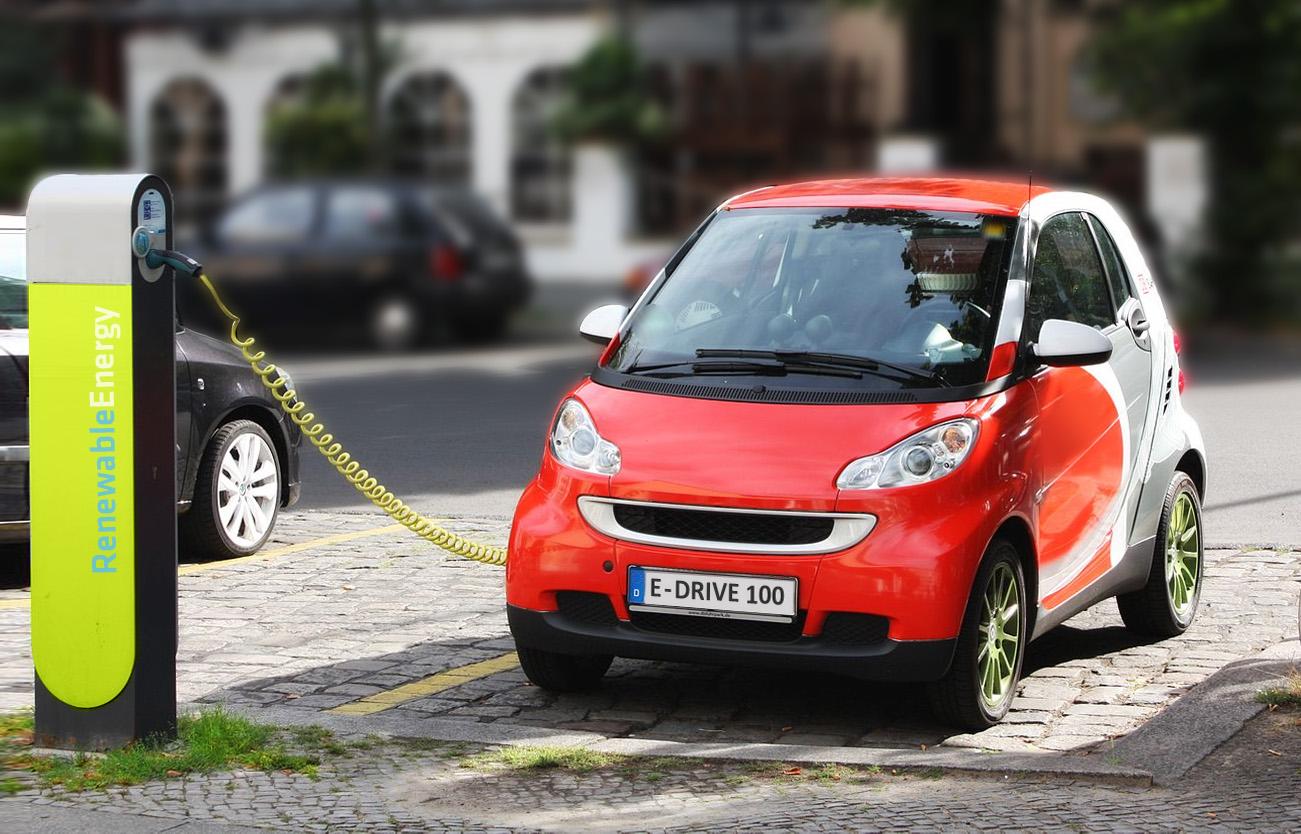While international bodies and climate experts have taken a careful and critical look at the significant Intergovernmental Panel of Experts on Climate Change (IPCC) report, researchers have underlined a few encouraging indicators in the study.
The IPCC Working Group III report, Climate Change 2022: Mitigation of Climate Change, notes that since 2010, there has been a sustained decrease of up to 85 per cent in the costs of renewable energy, such as solar and wind energy, and batteries. Some 36 countries have successfully cut greenhouse gas emissions (GHGs) over more than a decade. Opportunities to cut emissions affordably and cheaply have multiplied enormously since 2014. A few of these practices are now global trends.
Trend 1. Electric Vehicles Going Full Throttle
Electric vehicles are now widely accepted globally, powered by low-carbon electricity, and reducing greenhouse gas emissions (GHGs) of the polluting transport sector.
IPCC scientist Sudarmanto Budy Nugroho says, investments in active transport infrastructure, combined with the deployment of electric micro-mobility—for example, e-scooters and e-bikes—can further support GHGs reductions. “This can also make mobility more accessible to all, including marginalised populations,” the expert said.
Another interesting trend is the introduction of planet-friendly fuels. The IPCC highlights that sustainable biofuel can offer additional mitigation benefits in land-based transport, in the short and medium term. The experts are also hopeful of many mitigation strategies in the sector leading to other benefits like better air quality, more health benefits, equitable access to transportation services, reduced congestion, and lesser material demand.
Trend 2. Renewable Energy Gets Cheaper
According to the IPCC report, the unit costs of several low-emission technologies such as solar, wind and electric vehicles, have fallen continuously since 2010.
From 2010 to 2019, solar energy costs decreased 85 per cent, wind energy 55 per cent, and lithium-ion batteries, 85 per cent, thanks to innovation policy packages, which also supported global adoption.
“This can help us reduce emissions a lot. There exist options in all sectors to reduce emissions by half, by 2030,” says report author Masahiro Sugiyama.
The scientists argue that both tailored and comprehensive policies addressing innovation systems have helped overcome the distributional, environmental and social impacts potentially associated with global distribution of low-emission technologies.
Trend 3. Mitigation Laws Are Expanding
The experts have noted a ‘consistent’ expansion of policies and laws to address climate mitigation globally since the last IPCC report in 2014. The policies have helped avoid emissions that would otherwise have occurred and increase investment in low-carbon technologies and infrastructure.
Carbon taxes or emissions trading systems have helped too, as, by 2020, over 20 percent of global GHGs were covered by these tools, although coverage and prices have been insufficient to achieve deep reductions.
By 2020, 56 countries had ‘direct’ climate laws focused principally on reductions covering 53 percent of global emissions.
While many countries have now got policies to increase energy efficiency, reduce rates of deforestation and speed technology deployment to avoid, reduce or remove emissions, policy coverage of emissions and finance still remain uneven across sectors.
International agreements like Kyoto Protocol and Paris Agreement also created the mood of emission control. In 1997, the Kyoto Protocol made industrialised countries and economies reduce emissions and helped build national and international capacity for reporting and accounting emissions. Adopted in 2015, the Paris Agreement, with near-universal participation, has led to policy development and target-setting at national and regional levels for mitigation and greater transparency of climate action and support.
Trend 4. Net Zero Goals Are for Everyone
Challenging on a significant scale, net-zero carbon emissions from the industrial sector are still possible, insist IPCC experts. The world leaders, including Prime Minister Narendra Modi, agree.
“Reducing industry emissions will entail coordinated action throughout value chains to promote all mitigation options, including demand management, energy and materials efficiency, circular material flows, as well as abatement technologies and transformational changes in production processes,” the IPCC report explains.
The path to net zero can be simpler if the industries use the new production processes running on renewable energy, green hydrogen and biofuels, and control carbon.
Trend 5. Cities Must Deliver on Climate Action
A heavy emitter, urban areas provide key opportunities for climate mitigation. “All cities can contribute towards a net-zero future by integrating sectors, strategies and innovations, whether established, growing or emerging cities. The way urban areas continue to be planned, their interactions with the energy system and demands on materials, determine multiple opportunities with benefits for people and the planet,” says expert Siir Kilkis.
The authors recommend effective urban measures such as more walkable areas and greater renewable energy penetration.
“All of this is possible while cities improve air quality, increase job opportunities, expand urban green and blue infrastructure, and provide other co-benefits for sustainable development around the world as well as climate adaptation,” adds the IPCC author.
The guidelines are to reduce or change energy and material consumption, green electrification, and enhance carbon uptake and storage in the urban environment.
In addition to urbanisation, change is required in the construction sector, insists the IPCC Working Group III report. Existing buildings (if retrofitted) and buildings yet to be built are projected to approach net-zero GHGs in 2050. What is required though are policy packages, combining go-getting sufficiency, efficiency and renewable energy measures, efficiently implemented with no barriers to decarbonisation.
“Mitigation action in the building sector brings health gains through improved indoor air quality and thermal comfort, as well as reducing financial stress in all world regions. Overall, decarbonising the building stock contributes to human well-being,” highlights author Yamina Saheb.
Trend 6. Deployment of Economic Measures
The IPCC report notes that many regulatory and economic instruments have already been deployed successfully.
“These instruments could support deep emissions reductions and stimulate innovation if scaled up and applied more widely… Economy-wide packages, consistent with national circumstances, can meet short-term economic goals while reducing emissions and shifting development pathways towards sustainability,” the authors explain.
According to the data, total tracked financial flows for climate mitigation and adaptation increased by up to 60 percent between 2013-14 and 2019-20, but average growth has slowed since 2018.
“Where implemented, carbon pricing instruments have incentivised low-cost emissions reduction measures…Equity and distributional impacts of such carbon pricing instruments can be addressed by using revenue from carbon taxes or emissions trading to support low-income households, among other approaches,” add the authors.
The climate experts highlight with high confidence that removing fossil fuel subsidies would reduce emissions, improve public revenue and macroeconomic performance, and yield other environmental and sustainable development benefits. “Fossil fuel subsidy removal is projected by various studies to reduce global CO2 emissions by 1-4 percent, and greenhouse gas emissions by up to 10 percent by 2030, varying across regions,” the report says.
Trend 7. People Care and Participate
The IPCC authors recognise in their assessment that many citizens around the world care about nature, and environmental protection, and are motivated to engage in climate action.
“Yet they may face barriers to act, which can be removed by actions, for example, by industry, businesses, and governments,” says author Linda Steg.
“This assessment report shows that public acceptability is higher when cost and benefits are distributed in a fair way, and when fair and transparent decision procedures have been followed,” she outlines.
Trend 8. CO2 Removal: Complicated, But Essential
Accomplishing net-zero goals needs carbon dioxide removal (CDR).
“It involves removing carbon dioxide from the atmosphere and storing it on land, in the ground or in the ocean,” explains author Masahiro Sugiyama.
The impacts, risks and co-benefits of CDR deployment for ecosystems, biodiversity and people, will depend on the method adopted, locations, implementation and scale. Methods like reforestation, better forest management, soil carbon sequestration, peatland restoration and blue carbon management, can enhance biodiversity and ecosystem functions and employment and local livelihoods.
Just like CDR, ocean fertilisation, if implemented, could lead to nutrient redistribution, restructuring of ecosystems, enhanced oxygen consumption and acidification in deeper waters.
In addition to deep, rapid and sustained emission reductions, CDR can lower emissions in the near term, counterbalance ‘hard-to-abate’ residual emissions (from agriculture, aviation, shipping and industrial processes) in the mid-term, and achieve net negative emissions in the long-term, if deployed at levels exceeding annual residual emissions.


























